The largest Formula 1 circuit in the world: Sky Sports uses AI to create the ultimate racing circuit, including Spa’s legendary Eau Rouge and the uphill climb of Circuit of the Americas
March is just around the corner and that can only mean one thing: the Formula 1 season is finally starting.
To celebrate, Sky Sports experts have used artificial intelligence (AI) to come up with the ‘world’s largest F1 circuit’.
Based on input from thousands of fans, the 6.7 kilometer circuit features elements from multiple Grands Prix, including epic sights such as the Suzuka Ferris Wheel in Japan.
Also featured are the legendary Eau Rouge of Spa in Belgium, the Hairpin Hotel in Monaco and the uphill climb on the Circuit of the Americas.
Silverstone is surrounded by pouring rain as the revered RAF Red Arrows fly overhead to bring some color to a typical British summer day.
Sky Sports surveyed more than 4,000 fans about their ideal F1 track and used AI to bring it to life digitally
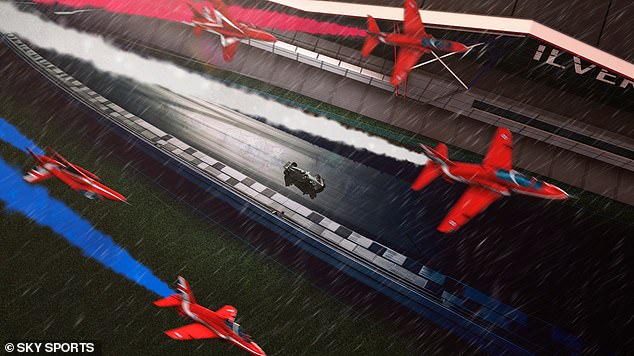
AI shows the great British circuit being pelted with rain and the Red Arrows flying overhead, past the Maggots, Becketts and Chapel Curve, described as Silverstone’s fastest and most iconic set of corners
“The best thing about Formula 1 is the passionate fans, the variety of circuits around the world and the demands that each circuit brings,” says F1 world champion and current Sky Sports analyst Jenson Button.
“I would have loved the opportunity to compete at this track because it combines many of the things that make F1 the most unique sport in the world: the glamor of Monaco, the speed of Monza and not to mention the unpredictable weather of Spa.’
For the project, Sky Sports surveyed more than 4,000 fans about their ideal F1 circuit and the elements it would feature.
Digital designers then used specific cues in the generative AI creative platform Midjourney to visualize what the best song might look like, both in still images and in animation.
The result, described as the ‘largest Formula 1 circuit in the world’, begins with the uphill climb of the first straight of Circuit of the Americas in Austin, Texas.
The route then passes Italy’s Imola Circuit and the Monza Circuit, with Rome’s iconic Colosseum in the distance.
Next up is the Circuit de Monaco, complete with F1’s slowest and tightest corner at Grand Hotel Hairpin and the swimming pool, an integral part of the Monaco Grand Prix since the race’s inception.

The ‘largest circuit in the world’ begins with the first straight of the Circuit of the Americas in Austin, Texas, with the uphill braking zone of Turn 1
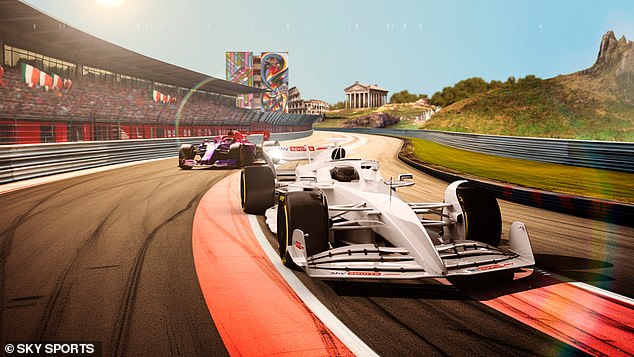
The Parabolica, a long, sharp right turn on the Monza circuit in Italy. The Colosseum, an iconic Italian monument, can be seen in the distance
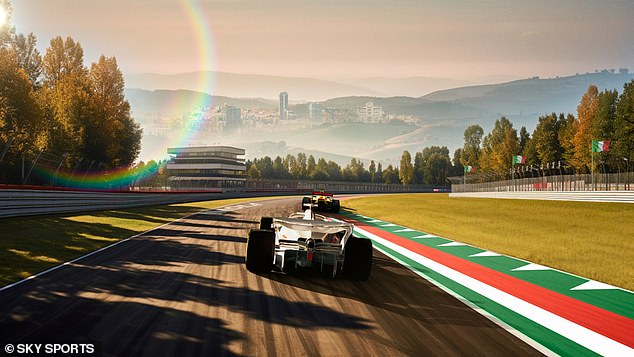
Acque Minerali on the Imola circuit in Italy, aptly named after the nearby mineral springs, is the third part and provides a picturesque backdrop
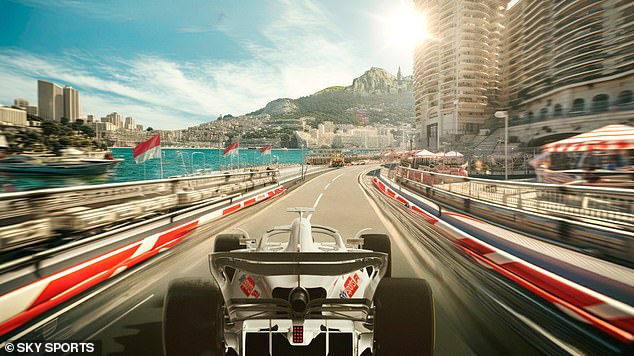
In the photo the swimming pool, an integral part of the Monaco Grand Prix since the start of the race
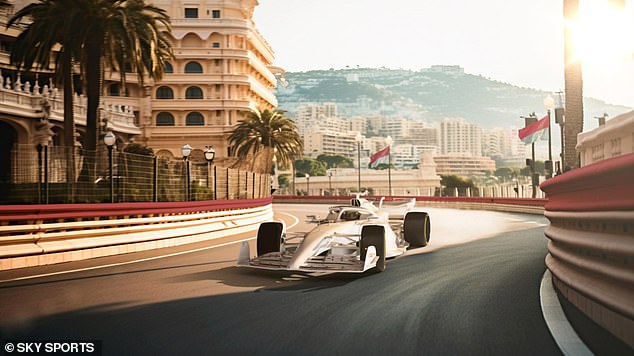
The iconic hairpin: Monaco features Formula 1’s slowest and tightest corner at the Grand Hotel Hairpin, Monte Carlo
Next, the dream circuit ends up at the Eau Rouge in Spa, Belgium, named after a 16-kilometer-long stream that runs alongside the circuit.
Also part of the Belgian Grand Prix is the Kemmel Straight, a section surrounded by the Ardennes Forest, known for its challenging conditions and unpredictable weather.
After the Castle Section at the Baku City Circuit in Azerbaijan, the circuit ends up at the legendary Silverstone in Northamptonshire.
AI shows the great British circuit being pelted with rain and the Red Arrows flying overhead, past the Maggots, Becketts and Chapel Curve, described as Silverstone’s fastest and most iconic set of corners.
The route then heads to Japan’s Suzuka Circuit, set against the iconic Ferris wheel, pink blossoms and Mount Fuji towering in the background.
Next is the bend between the Brabham and Jones grandstands during the Melbourne Grand Prix, named after Australian racing icons Sir Jack Brabham and Alan Jones.
However, the AI seems to have trouble getting the Australian flag correct, with four yellow stars instead of six white ones.
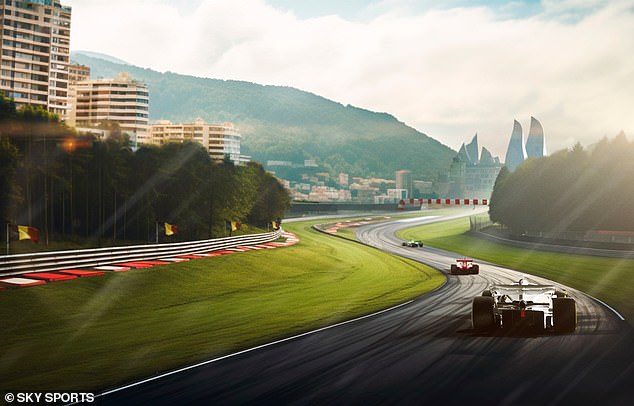
One of F1’s most legendary corners, Eau Rouge at Spa in Belgium, is named after a 15km-long stream that runs alongside the circuit
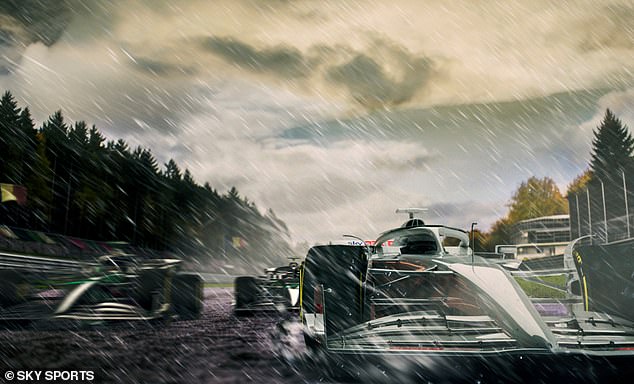
The Kemmel Rechte, surrounded by the Ardennes forest, is known for its challenging conditions and unpredictable weather
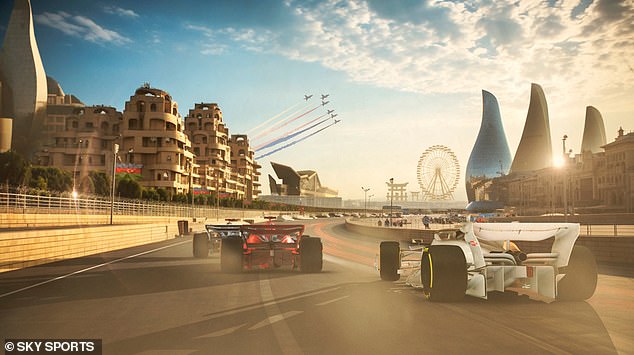
Castle Section at Azerbaijan’s Baku City Circuit (a 2.2km course) has the narrowest point that teams visit all year round and proves to be a difficult challenge for even the most experienced drivers. In the distance you can see the Red Arrows of Silverstone and the Ferris wheel of Suzuka
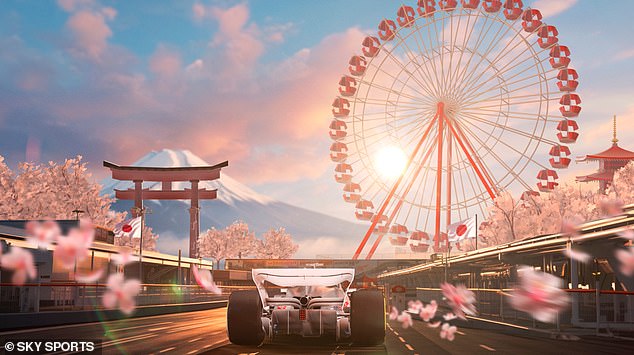
The ‘biggest song’ features Japan’s epic iconic Suzuka Ferris wheel, complete with pink blossoms and Mount Fuji towering in the background
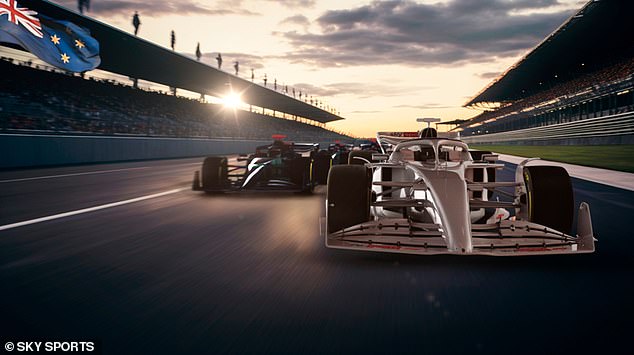
The eleventh section, named in honor of Australian racing icons Sir Jack Brabham and Alan Jones, is the corner between the Brabham and Jones stands during the Melbourne GP
‘The Greatest Track on Earth’ ultimately ends at the Interlagos Circuit of the São Paulo Grand Prix.
It features the Senna ‘S’, an S-shaped section of the circuit named after legendary Brazilian racing driver Ayrton Senna.
If you look closely you will see a statue of Senna, who was tragically killed during the 1994 San Marino Grand Prix when his car crashed into a concrete barrier.
Concluding the AI circuit in Brazil, the final section of Turn 14, known as Junção, runs into the final sector of Interlagos.
Sky Sports, which has exclusive broadcast rights to live F1 races, is trying to lure fans into subscriptions before the Grand Prix season starts next month.
The 2024 calendar includes a record 24 Grands Prix, starting with the Bahrain Grand Prix on March 2.

The Senna ‘S’, named after the legendary Ayrton Senna, is known as one of Formula 1’s most iconic overtaking spots
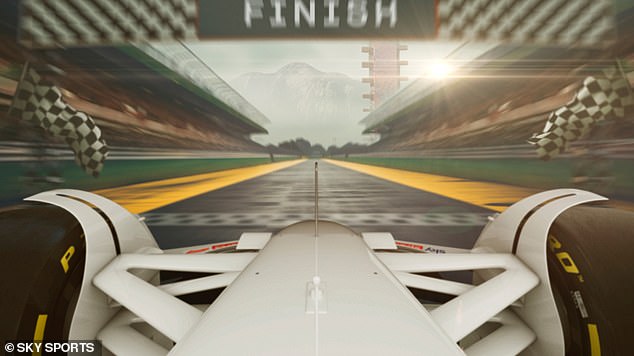
The thirteenth section of ‘The Greatest Track On Earth’ brings the race to an end in Brazil and runs from Turn 14, known as Junção, to the final sector of Interlagos.
